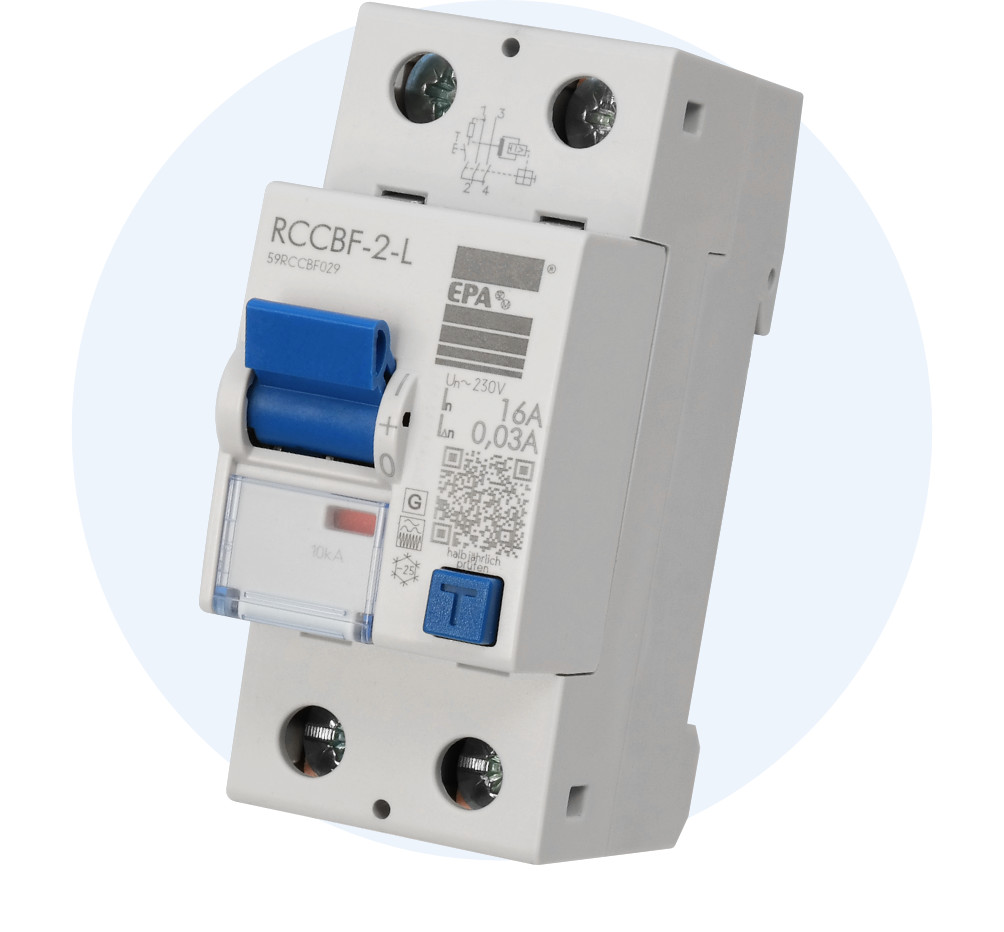Does your residual current circuit breaker (RCD) safely trip?
Washing machines, vacuum cleaners, dishwashers, vibrators, hammer drills, heating and heat pumps, ballasts in lighting systems, air conditioners and welding equipment are all devices that are in daily use in industry and households. As electronic controllers are used more and more in such devices, residual currents which cannot be adequately detected by a RCD Type A.
The reason for this: Single-phase frequency inverters are increasingly being used to control the speed of motors in an effort to increase the devices’ engery-efficiency.
These frequency inverters can generate residual currents with mixing frequencies other than 50 Hz by outputting a variable frequency in the order of 10 to 400 Hz. As a result, a RCD Type A may not trip properly in the event of a fault, because it is affected by these mixing frequencies. This would mean that the RCD will not possibly trip even if a fault occurs in the 50 Hz range.
The safety measure „protection by automatic switch-off of the power supply“ is therefore no longer guaranteed according to VDE 0100 part 410 or international regulations!
The solution: RCD Type F
In contrast to RCDs Type A, RCDs Type F detect AC fault currents, pulsating DC fault currents and additionally fault currents consisting of mixing frequencies up to 1 kHz.
If a corresponding residual current occurs – due to an insulation fault or when touching an active part – the Type F residual current circuit breaker disconnects the circuit.
RCDs Type F are additionally short-time delayed compared to RCDs Type A, and have an increased surge current resistance of 3,000 A. Hence, the RCDs Type F, which are sensitive to mixing frequencies, prevent unwanted trippings (e. g. due to surge currents, thunderstorms or operational leakage currents) and thus increase system availability.
In addition, they maintain the standard functionality with superimposed smooth DC residual currents of up to 10 mA. However, smooth DC fault currents cannot be detected.

EPA RCCB Type F
Mixing frequency sensitive residual current circuit breaker, suitable for use with single-phase frequency inverters
- Sensitive for AC- and pulsating DC fault currents of the mains frequency
- Mixing frequency sensitive
- Thunderstorm proof
- short-time delayed
- High short-circuit current resistance
All adventages at one glance
- Suitable for use with single-phase frequency inverters
- Sensitive to alternating and pulsating DC fault currents of the mains frequency (Type A)
- Sensitive to alternating residual currents with mixing frequencies unequal to 50 Hz (up to 1 kHz)
- High immunity against surge fault currents and mains voltage driven follow-on current pulses up to 3 kA
- Short-time delay of up to 10 ms prevents unwanted triggering by transient leakage currents
- Thunderstorm proof
- Meets all requirements for RCDs Type A, so that this can be replaced 1:1 by Type F
- Functionality maintenance with superimposed smooth DC residual currents of up to 10 mA (instead of only 6 mA, as with Type A)
- Small size for all rated currents
- High short-circuit current resistance of 10 kA
- Double-deck terminal blocks on both sides for large conductor cross-section and rail connection
- Switch position indicator and viewing window for mark stickers
- Multifunction switching toggle with three positions: „on“, „off“, „triggered“
- Neutral conductor position left or right available
- Quick mounting on DIN rail (35 mm)
- Any desired mounting position
- Any desired feed direction
